
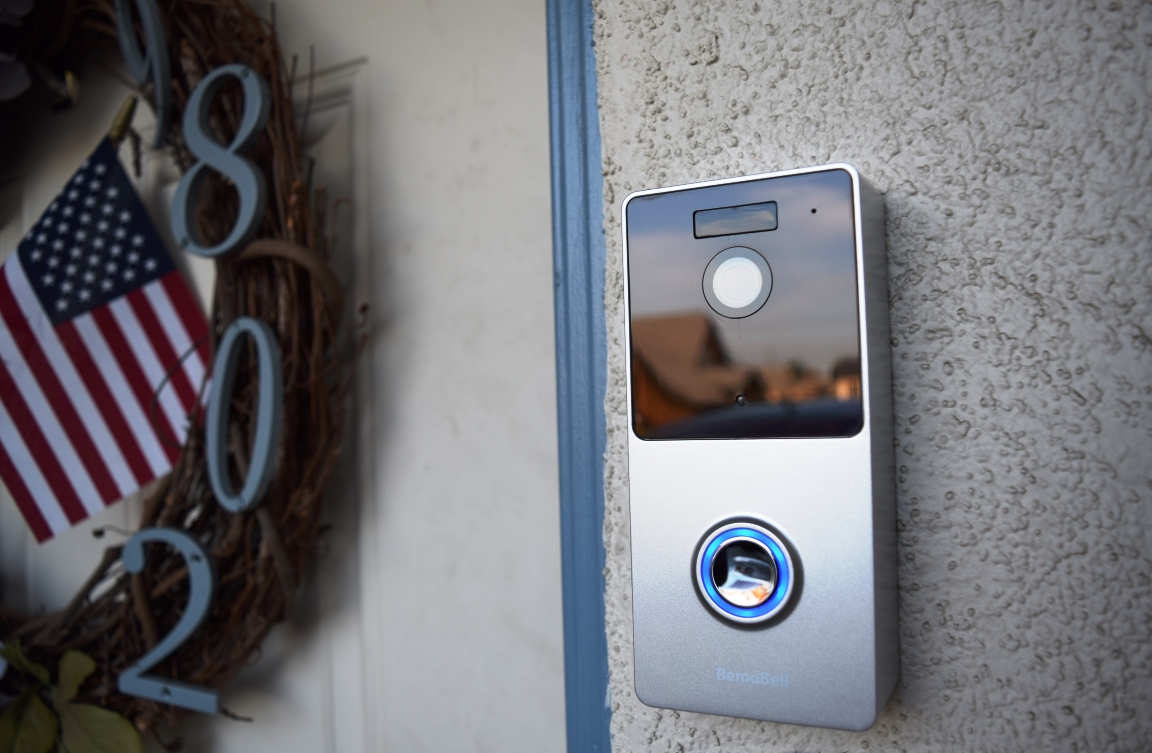
Of all the Smart Home products on the market, the lion’s share is dedicated to maintaining the security of the home against intrusion, fire, or other threats. It stands to reason in the hierarchy of Smart Home needs, safety comes above something like the ability to switch on and off lights from a distance.
With that in mind, the folks at Olive & Dove designed RemoBell as a smart doorbell that attempts to thwart would-be crooks, and keeps an eye on the front door when nobody is home. While this is a valiant goal, I’ve seen more than a few devices attempt to conquer this challenge, and many have crumbled in real-life application.
What makes the RemoBell unique?
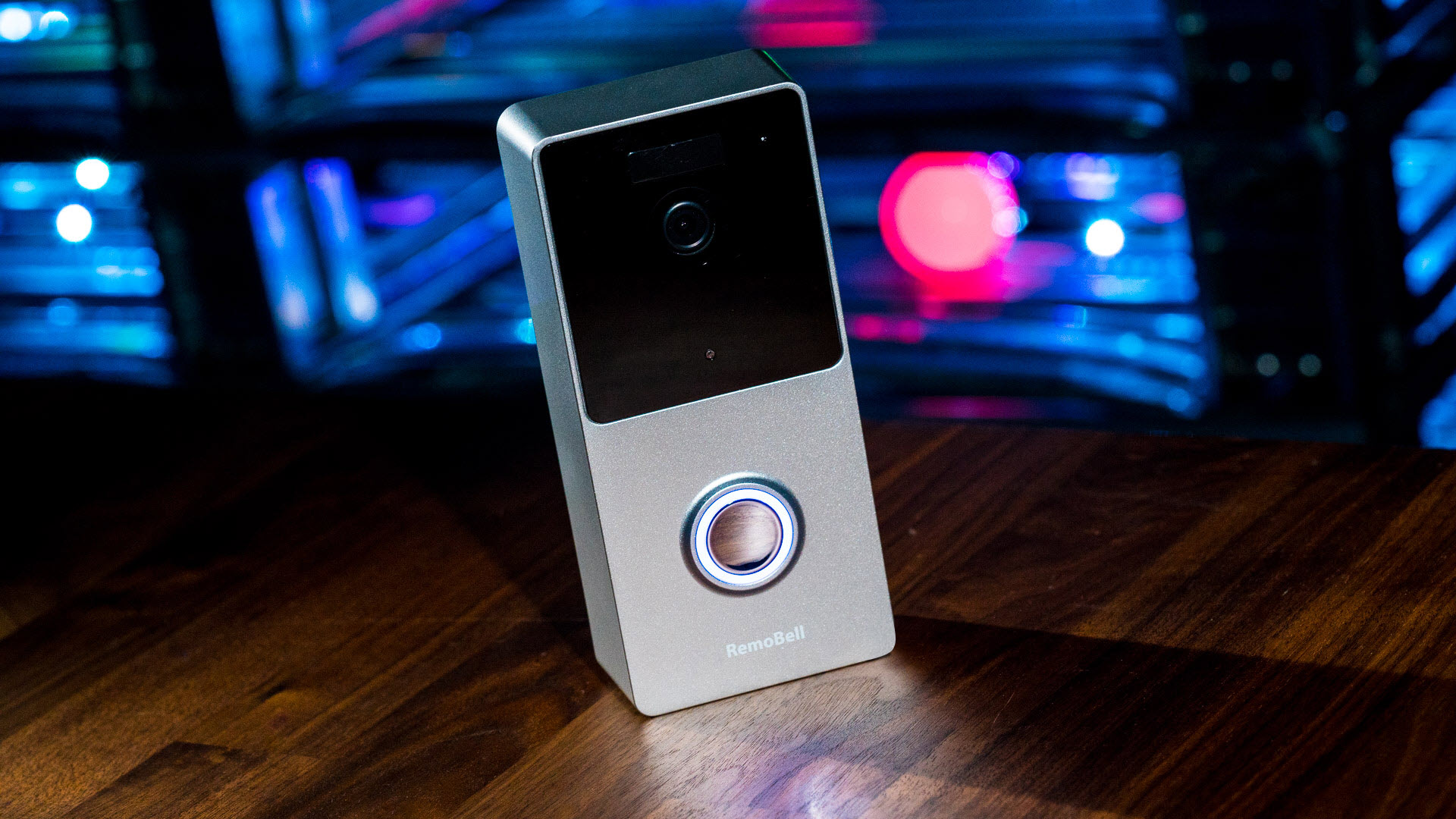
First off, the RemoBell uses Wi-Fi and not Bluetooth. While this isn’t alone something that shouts “winner” to those in the know, it’s a pretty big deal with home automation products. Often “Smart Home” products tout Bluetooth connectivity as a beneficial feature, however if you aren’t within 30 feet of the device this essentially renders it useless for actual protection while you are away.
The module uses passive infrared (PIR) sensors along with heat detection to decipher between false positive triggers (like trees and bushes swaying) and actual humans. This adds a layer of intelligence to the motion detection, while cutting down on the random push notifications and video recordings.
From an aesthetic perspective, the unit itself is sleek and clean. The design is a bit intimidating, and gives the impression that someone is on the other end watching—which is actually a good thing to have in a security device.
Real-time video
The daytime quality of the video feed is quite clear and bright when the subjects are reasonably lit, with enough detail to see actions and facial features even in the later evening hours. The video clip above was taken after 7 PM, when the sun was lower in the sky and cast some shadows over the front doorway area. In this setting, the bright background and the darker foreground challenged the RemoBell’s 720p camera, but the integrated Ambient Light Sensor (ALS) helps to adjust the video brightness for better quality video. There is an almost imperceptible lag time in movement that registers on the video feed, but it doesn’t really impede visibility.
One thing to note is that the placement of the doorbell can make a significant impact on the video detail in shadows, depending on the angle of the light source. With 120° FOV though, the camera covers a wide enough area to apply to most entryway setups. I noticed about a 20-foot reach on the motion detection when it was set to the highest sensitivity level.
Switching from shadows to nighttime visibility, there is actually an increase in the quality as the sensors adjust for the low light setting quite well. Once the infrared sensor detects motion a one-minute video recording is triggered, compressed in H.264, and then sent to the cloud. The data transfer between the app, the cloud, and the RemoBell uses 256-Bit AES (Advanced Encryption Standard) to protect against hacking.
Notifications
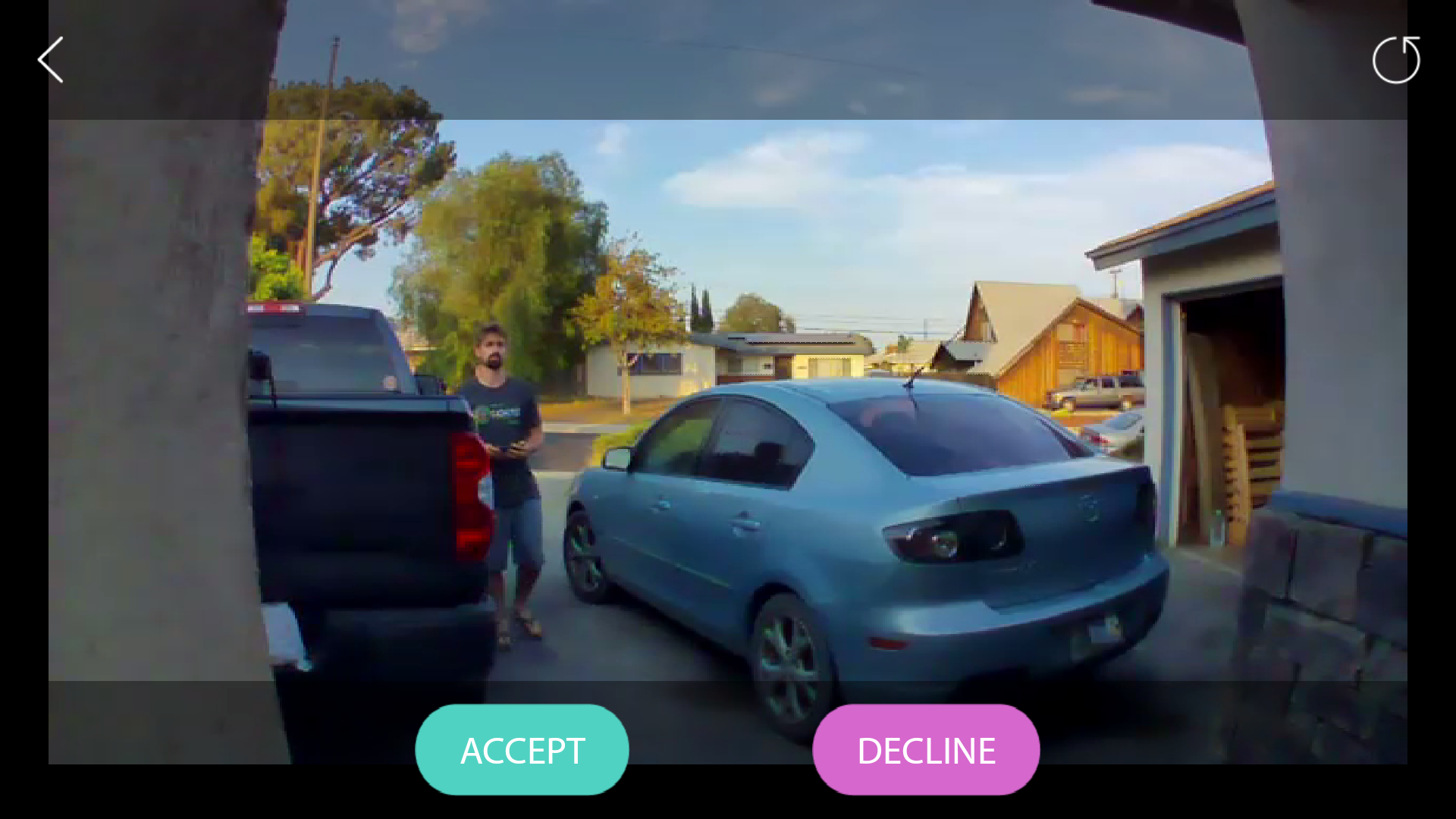
Push notifications are available to get alerts through the app for motion detection, as well as doorbell rings. When the doorbell ring notification comes through, it includes a live view of the video feed with options to accept or decline communication. Accepting the communication will establish two-way voice communication with the visitor.
I noticed the notifications for the doorbell ring are instantaneous, and for the motion detection there is only a momentary delay, keeping everything relevant at the moment it happens.
RemoBell Smart Wi-Fi Doorbell- $199
App interface
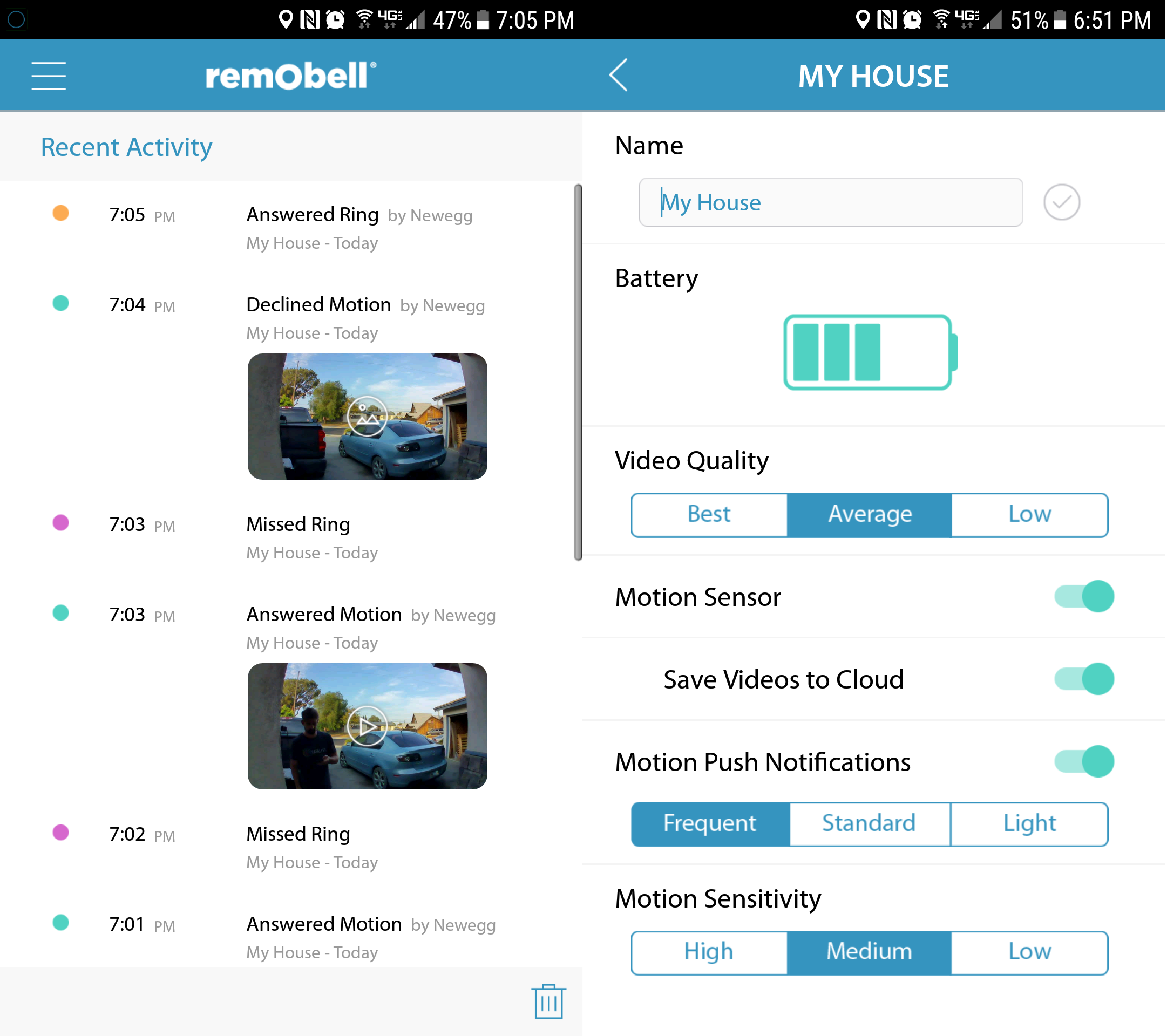
The interface is quite simple, and most of the settings can be adjusted from one screen. There are adjustments for motion sensitivity, video quality, notification frequency, activating the motion sensor, and monitoring the battery level.
The accompanying cloud storage (free for 30 days, $3/month after) for video events makes it easy to check activity throughout the day, even if a video is captured and not seen right away. Events like missed rings, answered rings, or motion detection triggers are all kept in an activity log. Knowing whether or not a delivery stays on the front porch until you get home is an additional nice piece of comfort to have as well.
Up to five users can access the device and app, which means that multiple family members can be watching over the house at all times and react to a situation if need be.
A watchful eye
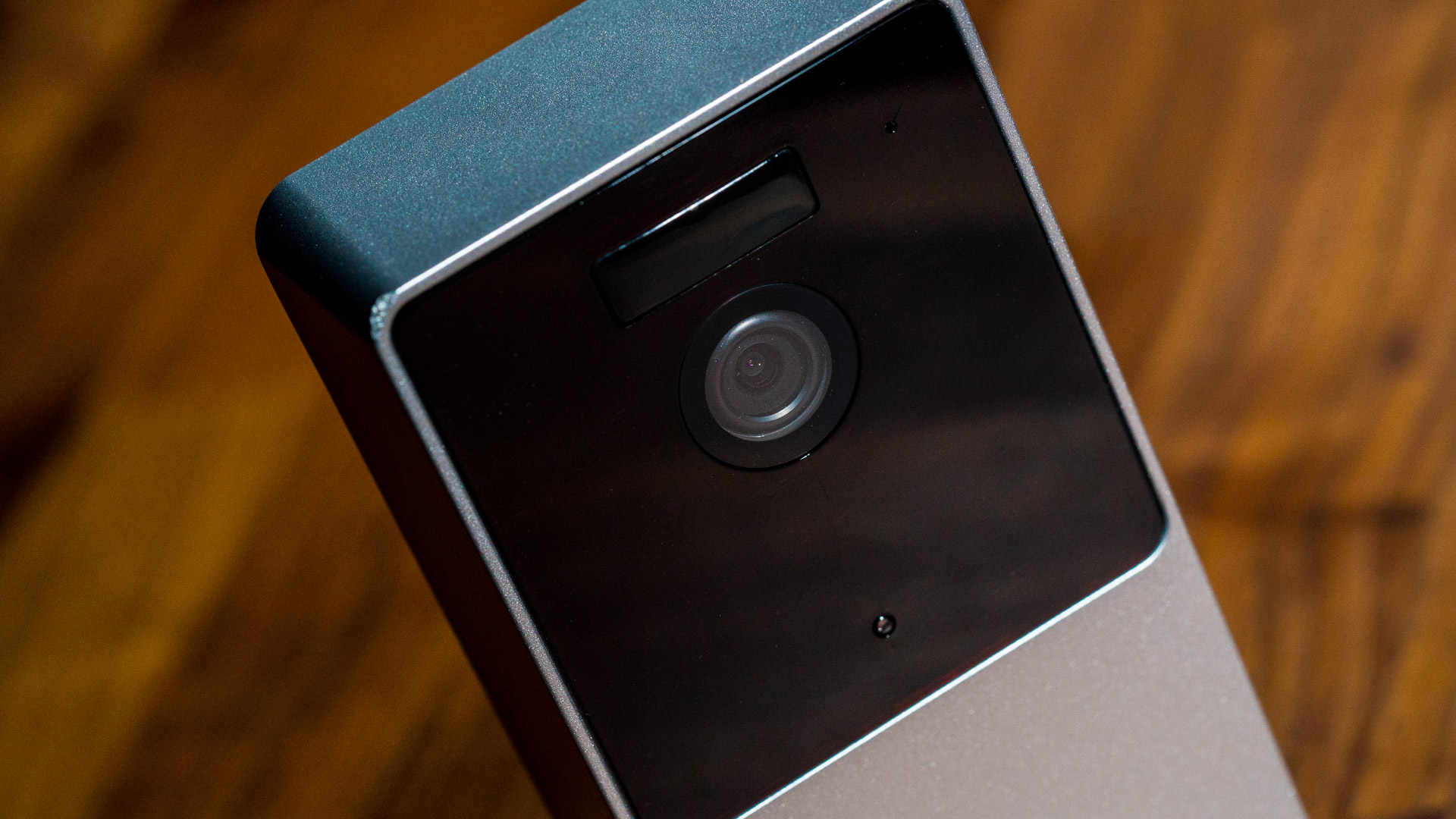
While I think this product is quite an effective tool, there are a few features I think RemoBell could have that would make it even more useful as part of your daily life.
I would have liked to see additional ringer options in the app, for customization. This is a little nitpicky of me, but it would be nice to have the option.
Another area of potential improvement would be the inclusion of a remote speaker, to place in the house and amplify the ringer. Even though most of us have our phones within reach at all times, the speaker is on the RemoBell unit itself—which is outside the door.
Home security is undoubtedly a moving target; as protection methods advance so do the attempts to reverse them. Getting a leg up home security with a smart product helps to prevent some of the ill-will burglars have, and empowers safe living for families. Starting with the right foundation is key, and RemoBell provides a rock-solid platform for the Smart Home for under $200.
